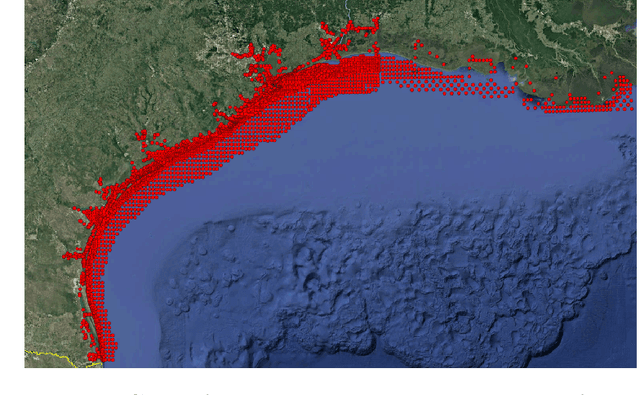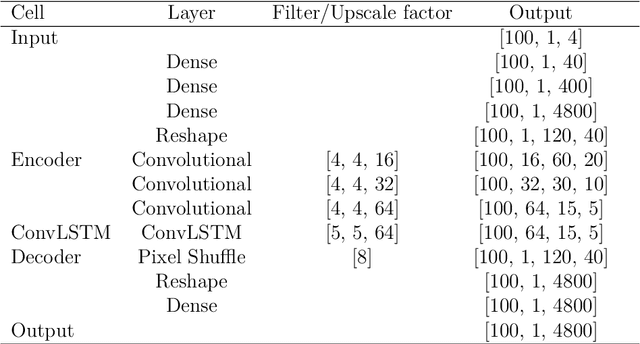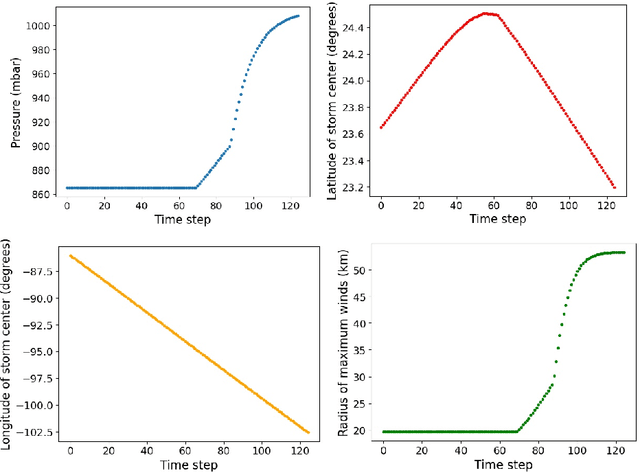An advanced spatio-temporal convolutional recurrent neural network for storm surge predictions
Paper and Code
Apr 18, 2022



In this research paper, we study the capability of artificial neural network models to emulate storm surge based on the storm track/size/intensity history, leveraging a database of synthetic storm simulations. Traditionally, Computational Fluid Dynamics solvers are employed to numerically solve the storm surge governing equations that are Partial Differential Equations and are generally very costly to simulate. This study presents a neural network model that can predict storm surge, informed by a database of synthetic storm simulations. This model can serve as a fast and affordable emulator for the very expensive CFD solvers. The neural network model is trained with the storm track parameters used to drive the CFD solvers, and the output of the model is the time-series evolution of the predicted storm surge across multiple nodes within the spatial domain of interest. Once the model is trained, it can be deployed for further predictions based on new storm track inputs. The developed neural network model is a time-series model, a Long short-term memory, a variation of Recurrent Neural Network, which is enriched with Convolutional Neural Networks. The convolutional neural network is employed to capture the correlation of data spatially. Therefore, the temporal and spatial correlations of data are captured by the combination of the mentioned models, the ConvLSTM model. As the problem is a sequence to sequence time-series problem, an encoder-decoder ConvLSTM model is designed. Some other techniques in the process of model training are also employed to enrich the model performance. The results show the proposed convolutional recurrent neural network outperforms the Gaussian Process implementation for the examined synthetic storm database.
 Add to Chrome
Add to Chrome Add to Firefox
Add to Firefox Add to Edge
Add to Edge